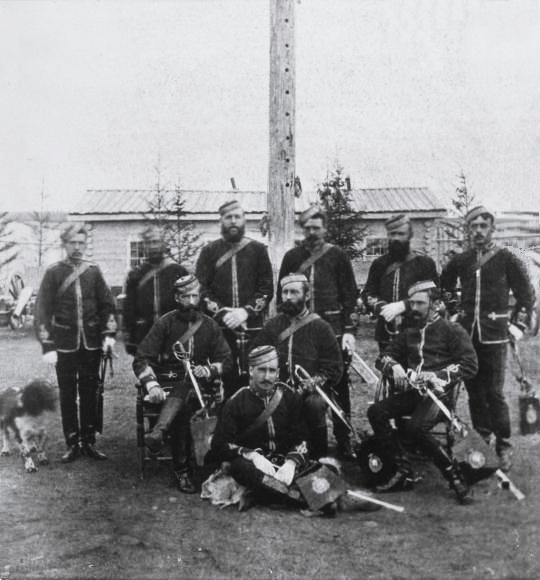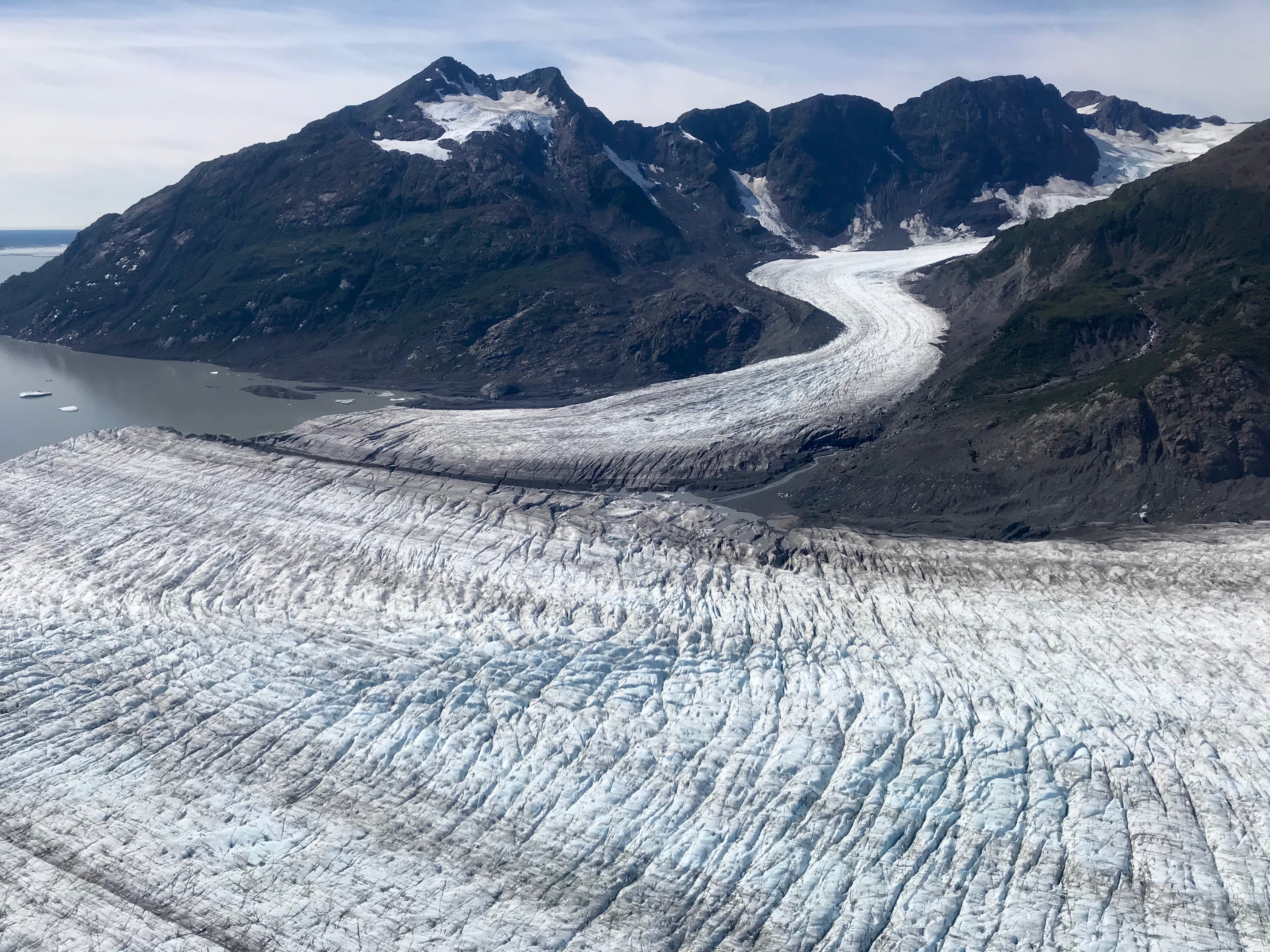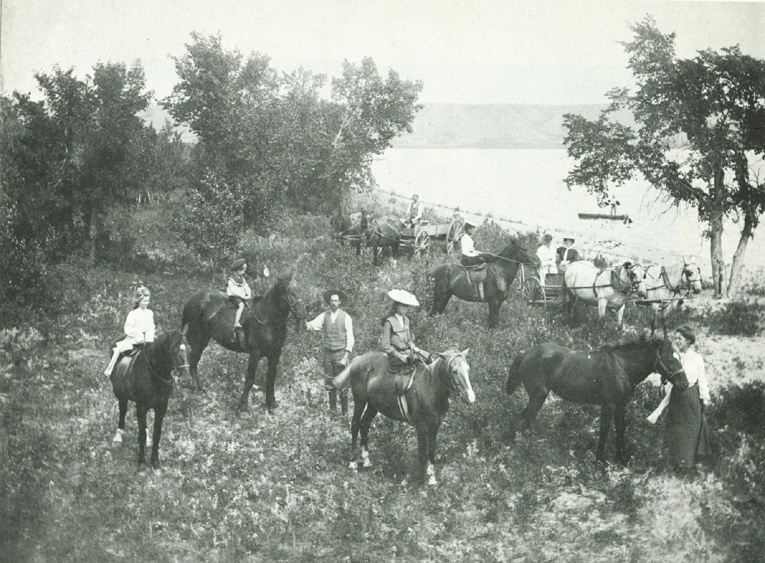|
James Morrow Walsh
James Morrow Walsh (22 May 1840 – 25 July 1905) was a North-West Mounted Police (NWMP) officer and the first commissioner of Yukon. Born in Prescott, Ontario, James Walsh was one of the original officers of the NWMP. Walsh served with the 2nd Prescott Rifle Company at Fort Wellington during the 1866 Fenian Raid and with the 56th Grenville Battalion during the 1870 raid. He was awarded the Canada General Service Medal with two clasps. Superintendent Walsh was assigned in 1875 to establish a post in the Cypress Hills in what is now Saskatchewan. He named it Fort Walsh after himself. The location of the post was determined by the Cypress Hills Massacre in 1873, an atrocity stemming from the illegal American whiskey trade. Walsh's original role was to shut down this trade, but in June 1876 his position grew in importance when several thousand Sioux crossed the border into Canada Canada is a country in North America. Its Provinces and territories of Canada, te ... [...More Info...] [...Related Items...] OR: [Wikipedia] [Google] [Baidu] |
North-West Mounted Police
The North-West Mounted Police (NWMP) was a Canadian paramilitary police force, established in 1873, to maintain order in the new Canadian North-West Territories (NWT) following the 1870 transfer of Rupert's Land and North-Western Territory to Canada from the Hudson's Bay Company, the Red River Rebellion and in response to lawlessness, demonstrated by the subsequent Cypress Hills Massacre and fears of United States military intervention. The NWMP combined military, police and judicial functions along similar lines to the Royal Irish Constabulary. A small, mobile police force was chosen to reduce potential for tensions with the United States and First Nations in Canada, First Nations. The NWMP uniforms included red coats deliberately reminiscent of British and Canadian military uniforms. The NWMP was established by the Canadian government during the ministry of Prime Minister of Canada, Prime Minister Sir John A. Macdonald, John Macdonald who defined its purpose as "the preserva ... [...More Info...] [...Related Items...] OR: [Wikipedia] [Google] [Baidu] |
Cypress Hills (Canada)
The Cypress Hills are a geographical region of hills in southwestern Saskatchewan and southeastern Alberta, Canada. The hills are part of the Missouri Coteau upland. The hills cover an area of approximately . About or 16% of this area is an interprovincial park. The highest point in the Cypress Hills is at Head of the Mountain in Alberta at . The highest point in Saskatchewan is , in a farmer's field in the Cypress Hills, at . Name The Cypress Hills have been known by a wide number of Indigenous and European names throughout their history. An 1882 Blackfoot–English dictionary written by C. M. Lanning provided the Blackfoot language name , which translates as 'striped earth' or 'earth over earth'. The Cree language name, in use at the same time, is , (spelled in a variety of anglicized forms including ), sometimes said to mean 'beautiful upland' but more accurately referring to 'an area to be respected, protected, taken care of and/or taken care with'. The Assiniboine lan ... [...More Info...] [...Related Items...] OR: [Wikipedia] [Google] [Baidu] |
Commissioners Of Yukon
The commissioner of Yukon () is the representative of the Government of Canada in the Canadian federal territory of Yukon. The commissioner is appointed by the federal government and, in contrast to the governor general of Canada or the lieutenant governors of the Canadian provinces, is not a viceroy and therefore not a direct representative of the Canadian monarch in the territory ''eo ipso''. List of commissioners Commissioners (1894–1918) Before the Yukon became a Territory on June 13, 1898, the Dominion agent/gold commissioner (Constantine and Fawcett) and the chief executive officer of the Yukon (Walsh for the first part of his term) was the Yukon representative. Gold commissioners The offices of Commissioner and Administrator were abolished in 1918. Office replaced by the ''Gold Commissioner'' who was responsible to the federal Minister of the Interior (and since 1936 the Minister of Mines and Resources). Gosselin was not a Commissioner Comptrollers The positions ... [...More Info...] [...Related Items...] OR: [Wikipedia] [Google] [Baidu] |
People Of The Klondike Gold Rush
The term "the people" refers to the public or common mass of people of a polity. As such it is a concept of human rights law, international law as well as constitutional law, particularly used for claims of popular sovereignty. In contrast, a people is any plurality of persons considered as a whole. Used in politics and law, the term "a people" refers to the collective or community of an ethnic group or nation. Concepts Legal Chapter One, Article One of the Charter of the United Nations states that "peoples" have the right to self-determination. Though the mere status as peoples and the right to self-determination, as for example in the case of Indigenous peoples (''peoples'', as in all groups of indigenous people, not merely all indigenous persons as in ''indigenous people''), does not automatically provide for independent sovereignty and therefore secession. Indeed, judge Ivor Jennings identified the inherent problems in the right of "peoples" to self-determination, as i ... [...More Info...] [...Related Items...] OR: [Wikipedia] [Google] [Baidu] |
Commissioner Of Yukon
The commissioner of Yukon () is the representative of the Government of Canada in the Canadian federal territory of Yukon. The commissioner is appointed by the federal government and, in contrast to the governor general of Canada or the Lieutenant governor (Canada), lieutenant governors of the Provinces and territories of Canada, Canadian provinces, is not a viceroy and therefore not a direct representative of the Monarchy of Canada, Canadian monarch in the territory ''eo ipso''. List of commissioners Commissioners (1894–1918) Before the Yukon became a Territory on June 13, 1898, the Dominion agent/gold commissioner (Constantine and Fawcett) and the chief executive officer of the Yukon (Walsh for the first part of his term) was the Yukon representative. Gold commissioners The offices of Commissioner and Administrator were abolished in 1918. Office replaced by the ''Gold Commissioner'' who was responsible to the federal Minister of the Interior (Canada), Minister of the Int ... [...More Info...] [...Related Items...] OR: [Wikipedia] [Google] [Baidu] |
Saint Elias Mountains
The Saint Elias Mountains () are a subgroup of the Pacific Coast Ranges, located in southeastern Alaska in the United States, Southwestern Yukon and the very far northwestern part of British Columbia in Canada. The range spans Wrangell-St. Elias National Park and Preserve in the United States and Kluane National Park and Reserve in Canada and includes all of Glacier Bay National Park in Alaska. In Alaska, the range includes parts of the city/borough of Yakutat and the Hoonah-Angoon and Valdez-Cordova census areas. This mountain range is named after Mount Saint Elias, which in turn was named in 1741 by the Danish-born Russian explorer Vitus Bering. Geology The Saint Elias Mountains form the highest coastal mountain range on Earth. It formed due to the subduction of the Yakutat microplate underneath the North American Plate. The Yakutat microplate is a wedge shaped oceanic plateau with a thickness of . Similar to the adjacent Pacific Plate, which has a crustal thickness of ... [...More Info...] [...Related Items...] OR: [Wikipedia] [Google] [Baidu] |
Mount Walsh
Mount Walsh is a mountain in Kluane National Park and Reserve in Yukon, Canada. The peak was named after a RCMP superintendent for the Yukon Territory, James Morrow Walsh. __TOC__ See also *List of mountain peaks of North America ** List of mountain peaks of Canada References External links Walsh Walsh Walsh may refer to: People and fictional characters * Walsh (surname), including a list of people and fictional characters Places Australia * Mount Walsh, Mount Walsh National Park Canada * Fort Walsh, one of the first Royal Canadian Mounted ... Kluane National Park and Reserve {{Yukon-geo-stub ... [...More Info...] [...Related Items...] OR: [Wikipedia] [Google] [Baidu] |
Fort Qu'Appelle, Saskatchewan
Fort Qu'Appelle () is a town in the Provinces and territories of Canada, Canadian province of Saskatchewan located in the Qu'Appelle River valley north-east of Regina, Saskatchewan, Regina, between Echo Lake (Saskatchewan), Echo and Mission Lakes of the Fishing Lakes. It is not to be confused with the once-significant nearby town of Qu'Appelle, Saskatchewan, Qu'Appelle. It was originally established in 1864 as a Hudson's Bay Company trading post. Fort Qu'Appelle, with its 1,919 residents in 2006, is at the junction of Saskatchewan Highway 35, Highway 35, Saskatchewan Highway 10, Highway 10, Saskatchewan Highway 22, Highway 22, Saskatchewan Highway 56, Highway 56, and Highway 215. The 1897 Hudson's Bay Company store, 1911 Grand Trunk Pacific Railway station, Fort Qu'Appelle Sanatorium (Fort San, Saskatchewan, Fort San), and the Treaty 4 Governance Centre in the shape of a Tipi, teepee are all landmarks of this community. Additionally, the Noel Pinay sculpture of a man praying c ... [...More Info...] [...Related Items...] OR: [Wikipedia] [Google] [Baidu] |
United States
The United States of America (USA), also known as the United States (U.S.) or America, is a country primarily located in North America. It is a federal republic of 50 U.S. state, states and a federal capital district, Washington, D.C. The 48 contiguous states border Canada to the north and Mexico to the south, with the semi-exclave of Alaska in the northwest and the archipelago of Hawaii in the Pacific Ocean. The United States asserts sovereignty over five Territories of the United States, major island territories and United States Minor Outlying Islands, various uninhabited islands in Oceania and the Caribbean. It is a megadiverse country, with the world's List of countries and dependencies by area, third-largest land area and List of countries and dependencies by population, third-largest population, exceeding 340 million. Its three Metropolitan statistical areas by population, largest metropolitan areas are New York metropolitan area, New York, Greater Los Angeles, Los Angel ... [...More Info...] [...Related Items...] OR: [Wikipedia] [Google] [Baidu] |
Sitting Bull
Sitting Bull ( ; December 15, 1890) was a Hunkpapa Lakota people, Lakota leader who led his people during years of resistance against Federal government of the United States, United States government policies. Sitting Bull was killed by Indian agency police accompanied by U.S. officers and supported by U.S. troops on the Standing Rock Indian Reservation during an attempt to arrest him at a time when authorities feared that he would join the Ghost Dance movement. Before the Battle of the Little Bighorn, Sitting Bull had a vision in which he saw many soldiers, "as thick as grasshoppers", falling upside down into the Lakota camp, which his people took as a foreshadowing of a major victory in which many soldiers would be killed. About three weeks later, the confederated Lakota tribes with the Northern Cheyenne defeated the 7th Cavalry Regiment, 7th Cavalry under Lt. Col. George Armstrong Custer on June 25, 1876, annihilating Custer's battalion and seeming to fulfill Sitting Bull's ... [...More Info...] [...Related Items...] OR: [Wikipedia] [Google] [Baidu] |
Battle Of Little Big Horn
The Battle of the Little Bighorn, known to the Lakota and other Plains Indians as the Battle of the Greasy Grass, and commonly referred to as Custer's Last Stand, was an armed engagement between combined forces of the Lakota Sioux, Northern Cheyenne, and Arapaho tribes and the 7th Cavalry Regiment of the United States Army. It took place on June 25–26, 1876, along the Little Bighorn River in the Crow Indian Reservation in southeastern Montana Territory. The battle, which resulted in the defeat of U.S. forces, was the most significant action of the Great Sioux War of 1876. Most battles in the Great Sioux War, including the Battle of the Little Bighorn, were on lands those natives had taken from other tribes since 1851. The Lakotas were there without consent from the local Crow tribe, which had a treaty on the area. Already in 1873, Crow chief Blackfoot had called for U.S. military actions against the native intruders. The steady Lakota incursions into treaty areas be ... [...More Info...] [...Related Items...] OR: [Wikipedia] [Google] [Baidu] |







